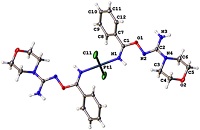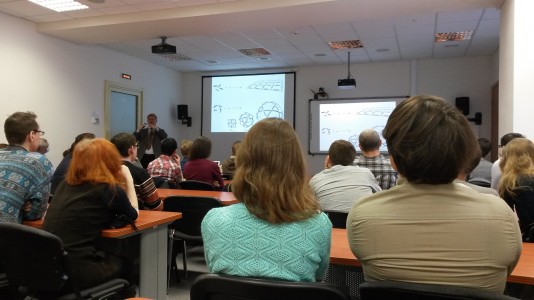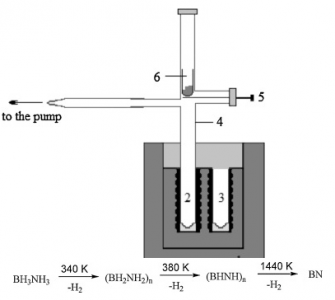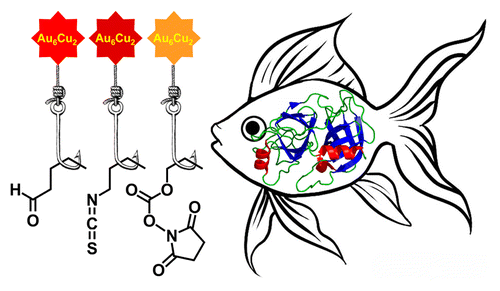
Источник: http://joyreactor.cc/post/2450506

Источник: http://joyreactor.cc/post/2450506
M.Ya. Demakova, D.S. Bolotin, N.A. Bokach, R.M. Islamova, G.L. Starova, V.Yu. Kukushkin
“Click-Type PtII-Mediated Hydroxyguanidine–Nitrile Coupling Provides Useful Catalysts for Hydrosilylation Cross-Linking”
ChemPlusChem, 2015, 80, 1607-1614
DOI:10.1002/cplu.201500327

The nitrile complexes trans-[PtCl2(RCN)2] (R=Et (NC1), tBu (NC2), Ph (NC3), p-BrC6H4 (NC4)) and cis-[PtCl2(RCN)2] (R=Et (NC5), tBu (NC6), Ph (NC7)) react with 1 equiv of the hydroxyguanidine OC4H8NC(=NOH)NH2 (HG) furnishing the mono-addition products trans- and cis-[PtCl2(RCN){NH=C(R)ON=C(NH2)NC4H8O}] (1–4 and 9–11; 7 examples; 54–74 % yield). Treatment of any of the nitrile complexes NC1–NC7 with HG in a 1:2 molar ratio generated the bis-addition products trans- and cis-[PtCl2{NH=C(R)ON=C(NH2)NC4H8O}2] (5–8 and 12–14; 7 examples; 69–89 % yield). The PtII-mediated coupling between nitrile ligands and HG proceeds substantially faster than the corresponding reactions involving amid- and ketoximes and gives redox stable products under normal conditions. Complexes 1, 6⋅4 CH2Cl2, 7⋅4 CH2Cl2, 8⋅2 CH2Cl2, and NC4 were studied by X-ray crystallography. Platinum(II) species 1–3, 10, 11, and especially 9, efficiently catalyze the hydrosilylation cross-linking of vinyl-terminated poly(dimethylsiloxane) and trimethylsilyl-terminated poly(dimethylsiloxane-co-ethylhydrosiloxane) giving high-quality thermally stable silicon resins with no structural defects. The usage of these platinum species as the catalysts does not require any inhibitors and, moreover, the complexes and their mixtures with vinyl- and trimethylsilyl-terminated polysiloxanes are shelf-stable in air.
В январе выполнено 909 заявок на сервисные измерения.
Измерено:
Выполнено 94 заявки на исследовательскую работу.
A.S. Smirnov, E.S. Yandanova, N.A. Bokach, G.L. Starova, V.V. Gurzhiy, M.S. Avdontceva, A.A. Zolotarev, V.Yu. Kukushkin
“Zinc(II)-mediated generation of 5-amino substituted 2,3-dihydro-1,2,4-oxadiazoles and their further ZnII-catalyzed and O2-involving transformations”
New J. Chem., 2015, 12, 9330-9344
DOI:10.1039/C5NJ02061A

ZnII-activated cyanamides NCNR2 (R2 = Me2, Et2, C5H10, (CH2)2O(CH2)2, Ph2) react with the acyclic N-alkyl ketonitrones Ph2C[double bond]N+(O−)R′ (R′ = Me, CH2Ph) and N-aryl ketonitrones (R′ = Ph, p-BrC6H4, p-EtC6H4) under mild conditions. Uncomplexed 5-aminosubstituted 2,3-dihydro-1,2,4-oxadiazoles (6 examples; 49–82%) were obtained in zinc(II)-involving cycloaddition of the N-alkyl ketonitrones to the cyanamide substrates; these 2,3-dihydro-1,2,4-oxadiazoles undergo ring-opening giving carbamoylamidines and methylidenureas. The N-aryl ketonitrones react with ZnII-activated cyanamides giving the open-chain systems, viz. carbamoylamidines, N′-(2-(diphenylmethylidene)amino)-phenyl-N,N-carbamimidic acids, and methylidenureas, which are presumably formed via the cycloaddition route followed by the N–O cleavage induced by the acceptor character of the aryl groups.

Благодарим участников пятого международного симпозиума по металлоорганической химии «STRONG LINKS VIA WEAK INTERACTIONS» за интересные доклады.
Yu. Kondratev, A. Butlak, I. Kazakov, A. Timoshkin
“Sublimation and thermal decomposition of ammonia borane: Competitive processes controlled by pressure”
Thermochim. Acta, 2015, in press
DOI:10.1016/j.tca.2015.08.021

Thermal behavior of ammonia borane BH3NH3 (AB) has been studied by calorimetry, tensimetry and mass spectrometry methods. It is shown, that depending on vapor pressure in the system two competitive processes are taking place at 357 K. At atmospheric pressure thermal decomposition with hydrogen evolution is the dominant process: BH3NH3(s) = 1/n (BH2NH2)n(s) + H2(g) (1). At low pressures (circa 4 mTorr) the major process is endothermic sublimation of AB: BH3NH3(s) = BH3NH3(g) (2). At intermediate pressures both processes occur simultaneously. Enthalpies for the processes (1) and (2) have been determined by drop-calorimetry method: Δ(1)H357° = −24.8 ± 2.3 kJ mol−1 and ΔsubH357°(BH3NH3) = 76.3 ± 3.0 kJ mol−1. Solid products after sublimation and decomposition have been characterized by IR and NMR spectroscopy; gaseous forms were studied by mass spectrometry. Activation energy of 94 ± 11 kJ mol−1 for the process (1) in range 327–351 K was determined by static tensimetry method. Based on the analysis of available thermodynamic characteristics, new values for the standard formation enthalpy of solid AB −133.4 ± 5.2 kJ mol−1 and polyamidoborane −156.7 ± 5.8 kJ mol−1 are recommended.
Во вторник 26 января в 11-30 в аудитории 1093 (Конференц зал РЦ) состоится: Пятый международный симпозиум по металлоорганической химии «STRONG LINKS VIA WEAK INTERACTIONS»
 |
11:30—12:00 Kari Rissanen «Self-Assembly of Large Metallosupramolecular Complexes» (University of Jyväskylä, Finland) |
 |
12:00—12:20 Armando J. L. Pombeiro “Resonance-Assisted Hydrogen Bonding as a Synthetic Tool” (Instituto Superior Técnico, Lisbon, Portugal, and RSF International Laboratory on Organometallic Chemistry, Saint Petersburg State University) |
 |
12:40—13:10 Matti Haukka «Dihalogens as Halogen Bond Donors” (University of Jyväskylä, Finland) |
 |
13:10—13:30 M. Fatima Guedes da Silva “Hydrogen Bonding in Water Containing Metal Coordination Compounds” (Instituto Superior Técnico, Lisbon, Portugal, and RSF International Laboratory on Organometallic Chemistry, Saint Petersburg State University) |
A.A. Beljaev, D.V. Krupenya, E.V. Grachova, V.V. Gurzhiy, A.S. Melnikov, P.Yu. Serdobintsev, E.S. Sinitsyna, E.G. Vlakh, T.B. Tennikova, S.P. Tunik
“Supramolecular AuI-CuI complexes as new luminescent labels for covalent bioconjugation”
Bioconjugate Chem., 2015
DOI:10.1021/acs.bioconjchem.5b00563

Two new supramolecular organometallic complexes, namely, [Au6Cu2(C2C6H4CHO)6(PPh2C6H4PPh2)3](PF6)2 and [Au6Cu2(C2C6H4NCS)6(PPh2C6H4PPh2)3](PF6)2, with highly reactive aldehyde and isothiocyanate groups have been synthesized and characterized using X-ray crystallography, ESI mass spectrometry, and NMR spectroscopy. The compounds obtained demonstrated bright emission in solution with the excited-state lifetime in microsecond domain both under single- and two-photon excitation. The luminescent complexes were found to be suitable for bioconjugation in aqueous media. In particular, they are able to form the covalent conjugates with proteins of different molecular size (soybean trypsin inhibitor, human serum albumin, rabbit anti-HSA antibodies). The conjugates demonstrated a high level of the phosphorescent emission from the covalently bound label, excellent solubility, and high stability in physiological media. The highest quantum yield, storage stability, and luminance were detected for bioconjugates formed by covalent attachment of the aldehyde-bearing supramolecular AuI–CuI complex. The measured biological activity of one of the labeled model proteins clearly showed that introduced label did not prevent the biorecognition and specific protein–protein complex formation that was extremely important for the application of the conjugates in biomolecular detection and imaging.
В декабре выполнено 1778 заявок на сервисные измерения.
Измерено:
Выполнено 196 заявок на исследовательскую работу.